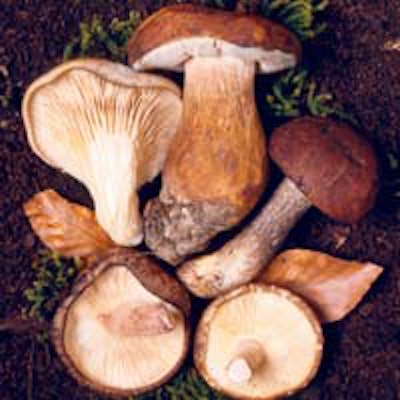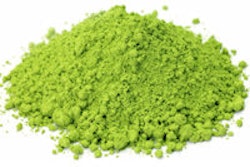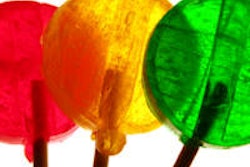
The formation of dental plaque involves a rather sequential pattern of bacterial colonization. As the teeth erupt or are cleaned, surfaces of the enamel are first coated with conditioning film that is characterized by molecules from the host (such as saliva) and from the bacteria (such as secreted by-products). Early colonizers will grow and change the local conditions to increase its suitability for more discriminating species that colonize later, attaching to previously bound bacteria by adhesion-receptor mechanisms.
Biofilms efficiently produce acid via their metabolism of carbohydrates, leading to demineralization of hard dental tissue. In order to prevent caries, it is essential to set our targets on the formation process of dental biofilms (Microbiology, February 2003, Vol. 149:2, pp. 279-294). Anticariogenic compounds that are able to target the mechanisms of biofilm formation are gaining interest, and many provide effective supplements to typical mechanical oral cleaning methods.
For example, a study published recently in Archives of Pharmacal Research (March 12, 2013) reported antibacterial activity of Albizia myriophylla extracts against Streptococcus mutans and clinical isolates. In this study, samples of the wood were collected from south Thailand and extracted for several suspected anticariogenic agents. Of several compound isolates, the most active against cavity-causing bacteria was found to be lupinifolin. Considering its strong activity against S. mutans, further research is anticipated to determine its potential in product applications.
Meanwhile, milk proteins have been shown experimentally to interfere with the process of bacterial colonization on surfaces coated in saliva. A 2012 study showed the effect of bovine milk osteopontin (OPN), a phosphorylated whey glycoprotein, on in vitro models of dental biofilm (PLoS One, August 7, 2012, e41534). The researchers found that OPN was able to bind to the cell surfaces of bacteria and reduce biofilm formation, even when introduced 12 hours postinitiation of the biofilm. Moreover, it had a significant impact on reducing the stability and also the amount of biofilm that had formed. This compound may be a valuable accessory to future oral hygiene protocols if these results can be translated to in vivo models.
Tea is said to be the most widely consumed beverage in the world today, and is known to contain numerous bioactive components. Epigallocatechin gallate (EGCG) is an antioxidant and antimicrobial component of tea catechins and, in a recent study, showed an interference of attachment of S. mutans (Archives of Oral Biology, June 2012, Vol. 57:6, pp. 678-683). The researchers found that EGCG inhibited in vitro growth of S. mutans in medium and had a minimum bactericidal concentration of 62.5 µg/mL. EGCG reduces S. mutans' biofilm formation by suppressing gtf gene expression associated with biofilm formation and cell adherence, and is thus able to take its action at sublethal doses, the study authors concluded.
This is an exciting natural anticariogenic compound that can prevent biofilm without having to suppress the growth of the oral bacterial population. With the added dental health implication, tea may be considered a "functional food for oral health" (Nutrition, May 2002, Vol. 18:5, pp. 443-444).
Ginkgo biloba, mushroom extract
Ginkgo biloba, a component of the extract from Ginkgo leaves and seeds, has been widely used in traditional Chinese medicine. Furthermore, ginkgolic acids are a group of compounds in Ginkgo biloba and have attracted attention as a result of their bioactive properties, such as antitumor and antimicrobial effects (Chemotherapy, October 2010, Vol. 56:5, pp. 393-402).
One recent paper investigated the effects of ginkgogenolic acid against S. mutans to see whether it would interfere with bacterial adherence, biofilm formation, and other factors (Folia Microbiologica, September 6, 2012). Ginkgoneolic acid was found to inhibit the adherence of S. mutans at a concentration of 2 μg/mL. When ginkgoneolic acid's antimicrobial capabilities were evaluated in vitro, it was shown to be bactericidal against S. mutans at even 4 μg/mL. Moreover, this agent was able to successfully inhibit formation of a biofilm.
This natural product might be a promising future therapeutic agent if experiments with multispecies biofilms can produce the similar results.
Another recent study describes the identification of a low molecular mass extract (< 5,000 Da) of the edible shiitake mushroom (Journal of Biomedicine and Biotechnology, Vol. 2011:135034). The extract exhibits many biological activities important in preventing dental caries, including bactericidal effects on cariogenic microorganisms, prevention of microbe coaggregation, and disruption of signal transduction in S. mutans.
For this study, the researchers grew microcosms derived from saliva in mimicked cariogenic environments in vivo. Fractioned shiitake extracts and a positive control (0.12% chlorhexidine digluconate) were tested. Despite a lack of strong inhibitory effects of all the test compounds, one subfraction (SF4) did show inhibitory effects on the biofilms. SF4 from the shiitake has strong anticariogenic potential and should be further characterized to fully evaluate its efficacy, the study authors concluded.
As dental professionals, we need to conduct basic science, translational, and clinical research on potential new anticariogenic agents to stay on the cutting edge of caries prevention. A plethora of natural products contain antimicrobial properties and may provide useful in preventing biofilm formation. As our discovery and characterization of new cavity-preventive compounds progresses, we will be able significantly advance the effectiveness of preventive therapies that are currently available to patients worldwide.
Zachary R. Conley is a graduate student at the University of Arizona, studying molecular and cellular biology with a focus in bioengineering. His undergraduate education, also at the UA, was in nutritional sciences and chemistry.



















